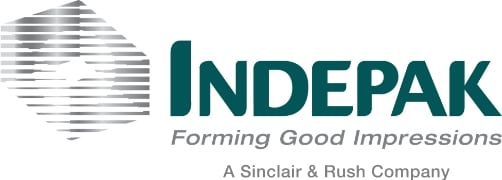When it comes to industrial thermoform plastics, our customers have many options to consider, including PET, HDPE, LDPE, PVC and polystyrene. The type of plastic we use will depend upon many factors, such as the type of product you produce, the level of protection needed for your product, your budget and so on. Here’s a quick look at polystyrene and high-impact polystyrene, which can be used for a number of our industrial thermoform projects.
A Bit Of History
Polystyrene often is known by its trademarked name, Styrofoam. This type of thermoform plastic was developed shortly after World War II by chemists at Dow, although its roots go back much further. In fact, a 19th-century apothecary named Eduard Simon was the first person to actually develop polystyrene and he did so from a natural resin rather than the synthetic materials we use today. However, Simon didn’t fully understand what he had discovered, and it would be many years before his chemistry studies led to the development of polystyrene.
Eventually, Simon’s studies with rubber and natural resins would help other chemists develop the synthetic materials we call plastics. An early version of polystyrene, which is a type of foamed plastic, was first patented by Carl Munters, a Swedish inventor. Eventually, scientists at Dow Chemical studied this material further and developed the type of polystyrene we use today for many industrial thermoform projects.
Foamed Polystyrene
When one thinks about polystyrene, you probably think about items such disposable coffee cups or those clamshell takeout containers from restaurants or perhaps the packing peanuts that scatter all over your floor when you open a parcel. These are just a few uses for foamed polystyrene, which offers a high level of insulation, thus it can keep food and drinks warm for an extended period of time. It also is used as insulation for walls, refrigerators and freezers, as it’s a good insulator and also water-resistant. Because it offers decent amount of impact resistance, foamed polystyrene can be used as packaging materials and food packaging, such as egg cartons.
High-Impact Polystyrene
Chemistry is amazing science. Take a soft foamy plastic such as polystyrene, change it up a bit and you have a strong plastic known as high-impact polystyrene or HIPS. This type of polystyrene can be used to create many items, including signs, point-of-purchase displays, CD cases, razors and much more. It offers a high level of impact resistance and machinability. It’s FDA approved, so it can be used by the specialty foods industry and HIPS also is approved for use in some medical or pharmaceutical products. HIPS also can be produced in a variety of colors, which adds to its versatility. Like foamed polystyrene, HIPS is a low-cost material, which is yet another advantage to this material.
Acrylonitrile Butadiene Styrene
Acrylonitrile Butadiene Styrene is quite a mouthful to say, so in the industrial thermoform world, we simply call this ABS. This thermoform plastic is not actually polystyrene, but a cousin of styrene, so to speak, and you probably noticed that the “S” stands for styrene. ABS is what you get when you combine styrene and acrylonitrile and polybutadiene. ABS offers high impact resistance and is resistant to many liquids, both acids and alkalis. It’s an attractive thermoform plastic used to create many items, including musical instruments, computer keyboard parts and those colorful LEGO bricks. It’s also commonly used as filament for 3D printers.
Recycling Options
Polystyrene, also known as PS, is a thermoform plastic and virtually all thermoform plastics can be recycled. Each type of thermoform plastic has a special resin identification code, which helps recycling centers sort plastics. PS has a code of 6, and this includes both foamed polystyrene and HIPS. Both materials can be recycled, and while not all curbside recycling programs accept these materials, more and more cities are adding this thermoform plastic to their list of acceptable recyclable materials.
When it comes to ABS, recycling is a bit trickier. This plastic is sorted with several other types of plastics in the #7 category, which is simply called “Other.” Items made from ABS often are not accepted by curbside recycling programs. However, items made from ABS also typically are meant to have a much longer life than something made from foamed polystyrene. For instance, you would toss a foam cup in the recycling bin shortly after use, but a LEGO brick is something that would be kept around for years. Even many items made from HIPS, such as a tray or toys, typically have a very long life, and won’t be tossed in a bin anytime soon.
Polystyrene can be an excellent cost-effective and versatile plastic for many industrial thermoform projects. At Indepak, we can use foamed polystyrene, HIPS and ABS for a wide variety of projects as well as other materials, including materials with recycled content and even bioplastics. We work with clients of a wide range of industries, including the specialty foods industry, the medical and pharmaceutical industries, the personal care industry, the electronics industry, the agricultural industry and for a variety of retail companies.





